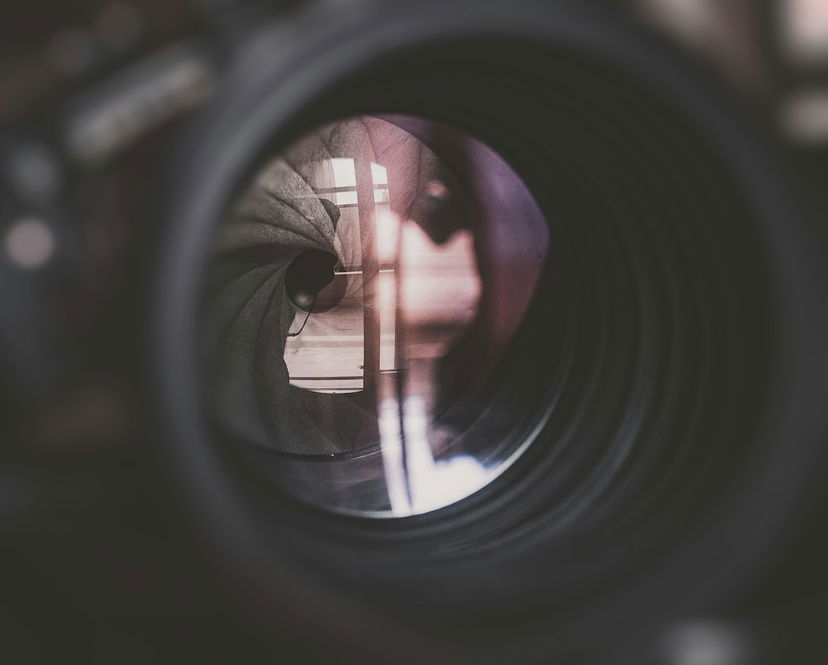How to Clean a Camera Lens? (7 Best Lens Cleaning Tips)
You do not have to be messy to have problems with the clarity of your camera lens. Having a dirty lens ensures frustration when photographing a scene and adds extra time to the editing stage.
Some problems can be horrific if not dealt with immediately. They can result in spending extra money on new equipment.
Instead, we recommend learning how to clean a camera lens properly.
This article shows how to prevent your camera lens from getting polluted with dust, moisture, and fungus. We also explain how to clean a camera lens to make it work like new.
How to Clean a Camera Lens: Some Tips
You can increase the lifespan of your lens with proper lens cleaning. The more polluted your gear is, the higher the risks are for malfunction.
Here are some tips to prevent this from happening:
- Carry your camera in a safe camera bag
- Keep your gear in a dry, bright place
- Let your gear dry out as moisture can get into your lens when shooting in a tropical area or the rain
- Use a UV filter to protect the front element of your camera lens
- Always use your lens cap
- Use a lens hood
- Do not change lenses when in a dusty area
- Go to a camera repair shop regularly
- Remove pollution as soon as you notice it
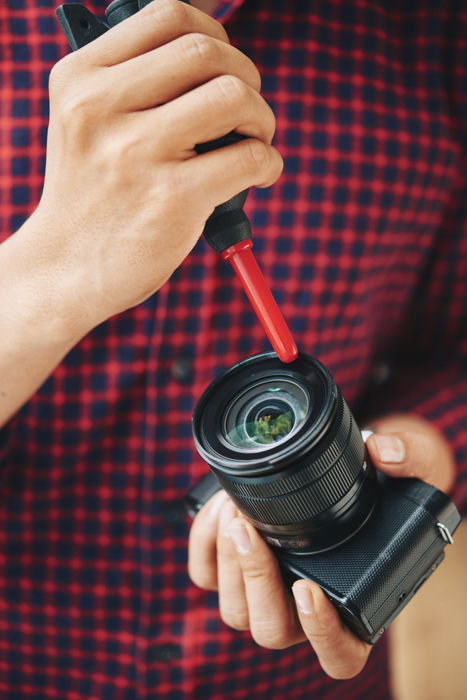
How To Clean Your Camera Lens
Here are our seven tips in case you could not prevent your lens from getting polluted.
1. Do Not Blow On the Lens
Use a blower instead. If you blow on it, it can cause moisture and more pollution on the lens. A small blower can fit in your pocket so that you can use it anytime and anywhere.
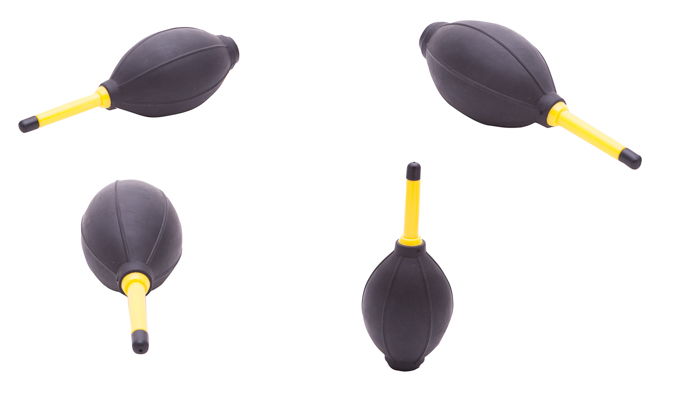
2. Use a Microfiber Cloth or a Lens Brush
When you need to wipe something off your lens, make sure to use a soft tool. We would recommend a microfiber lens cloth, lens brushes, or cleaning tissues. Use camel hair if you can, as it is the softest option you may find.
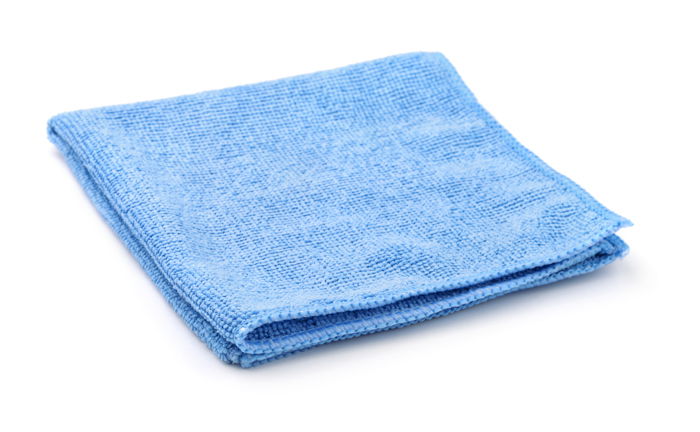
3. Clean Your Viewfinder Immediately
If you notice spots when you look through your viewfinder, clean it first. Use a microfiber cloth. You could find the marks are there and not actually on your lens surface or inside it.
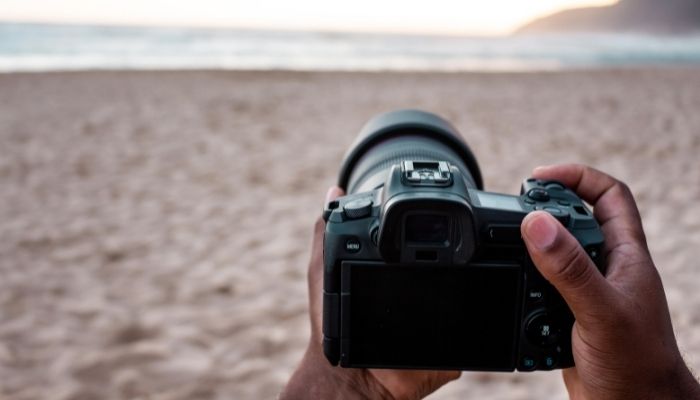
4. Those Hard to Reach Spots on the Lens Body + Hood
Start by cleaning the lens body and hood with a damp microfiber cloth. A few drops of lens cleaning solution works wonders to remove dust particles. I have used q-tips to remove built-up dirt and dust in hard-to-reach areas, such as the manual/autofocus switch. Soft toothbrushes also work, especially for the rubber focus or zoom rings.
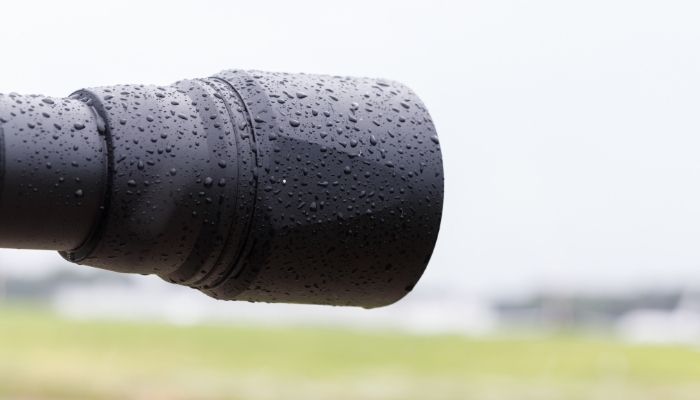
5. Use Cleaning Fluid
Use the blower and the cleaning brush, but apply lens cleaning fluid to the cloth if it is not enough. Not directly to the lens because it could cause beads of cleaning liquid. Wipe in concentric circles, as this reduces streaks. Work from the center out with circular motion, as this pushes the debris closer to the edge. Do not apply too much pressure, as this could lead to scratches or smudging.
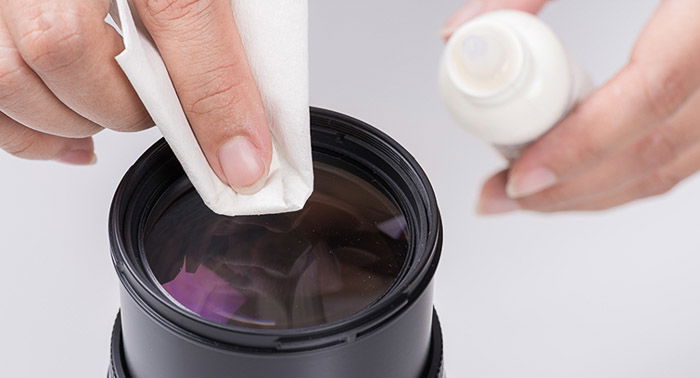
6. The Lens Mount
Rub the lens mount with the same damp cloth. Keep an eye out for dirt and grease that may be present.
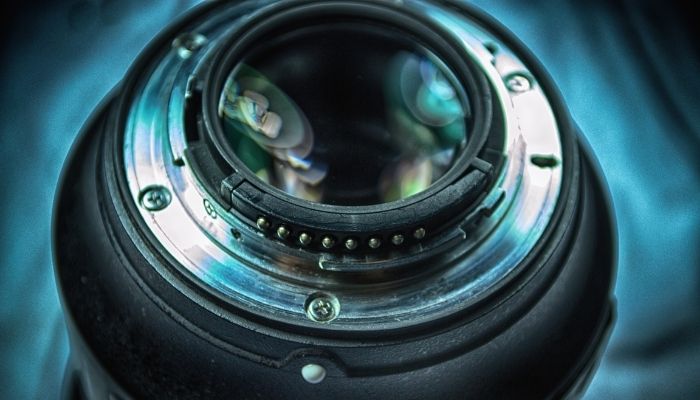
7. What About the Rear Optical Element?
Start with the air blower, as some debris or dirt could be abrasive. Then, use a dry cloth (unused) to clean smudges and dust away. For the glass elements, try and keep your microfiber cloths in an airtight container. Always check them for dirt first.
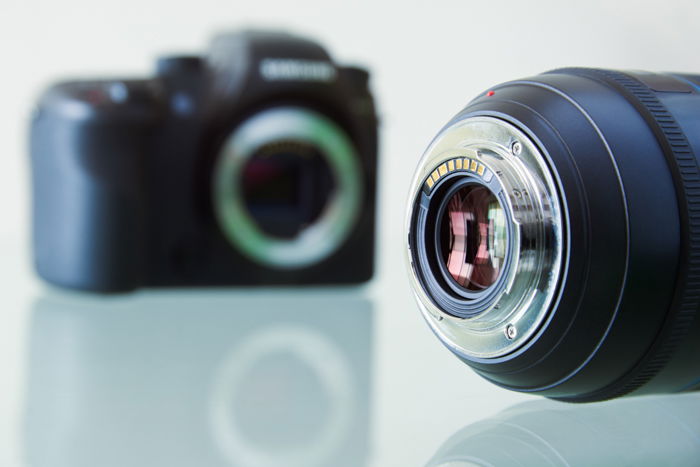
Are There Any Dangers When Cleaning Camera Lenses?
Do not clean your camera lenses all the time. Your camera gear has special coatings and chemicals used in its production, which you should not remove. Lenses and sensors are at the top of the list.
Make sure only to use products that are especially for lens cleaning. It is also worth noting that different lenses have different lens coating and need different chemicals. Some of the chemicals mentioned in the lens cleaning kit may not be suitable for your lens. Check in the manual.
If you have introduced your lens to sand, then do not wipe a cloth over it. This will cause permanent damage. Start with a blower or pass it on to a professional.
Keep your microfiber cloths in an airtight and clean container. Check them first for any dirt or dust you may get more dirt on your lens.
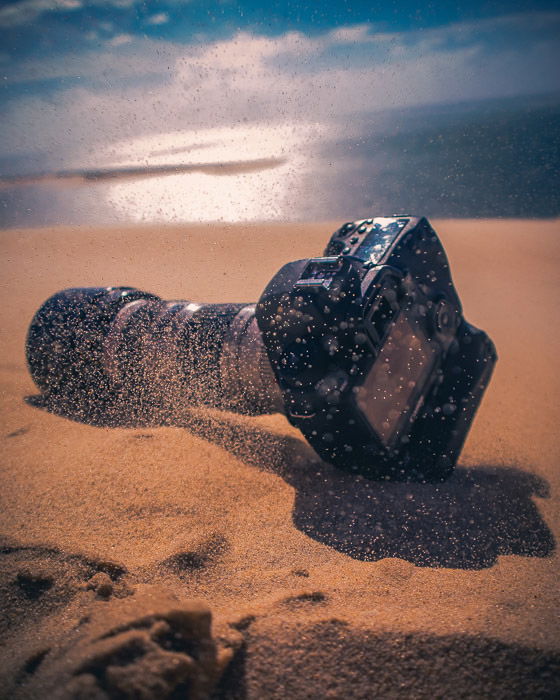
Conclusion
It is common to have some dirt on or inside your camera lens. It is tough to keep them clean when you use them every day. We recommend paying attention to prevention as lens cleaning is not always easy. Keeping your gear clean is much easier than solving the problems dirt has caused after the fact.
Always have clean tools with you for lens cleaning. If you see that you cannot easily remove the dirt, take your lens to a camera service.
Learn more tips and tricks with our Photography Unlocked Course!




